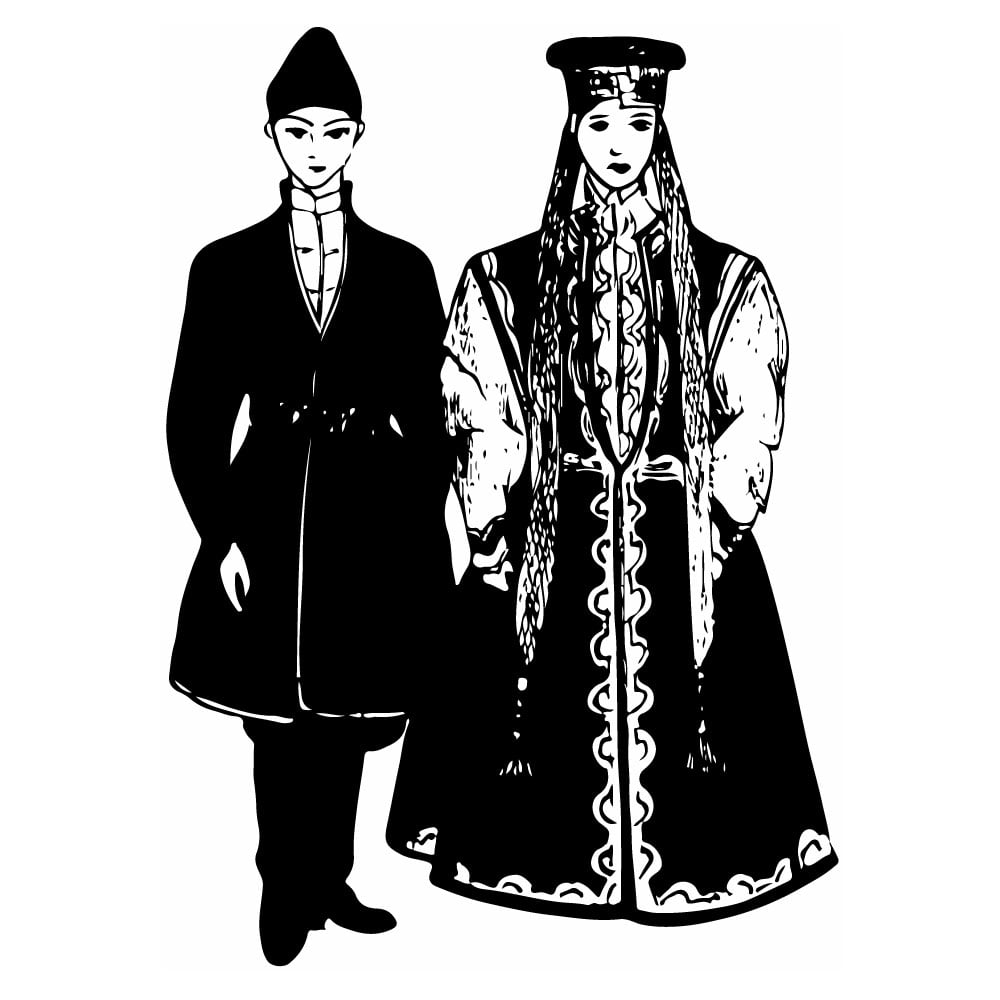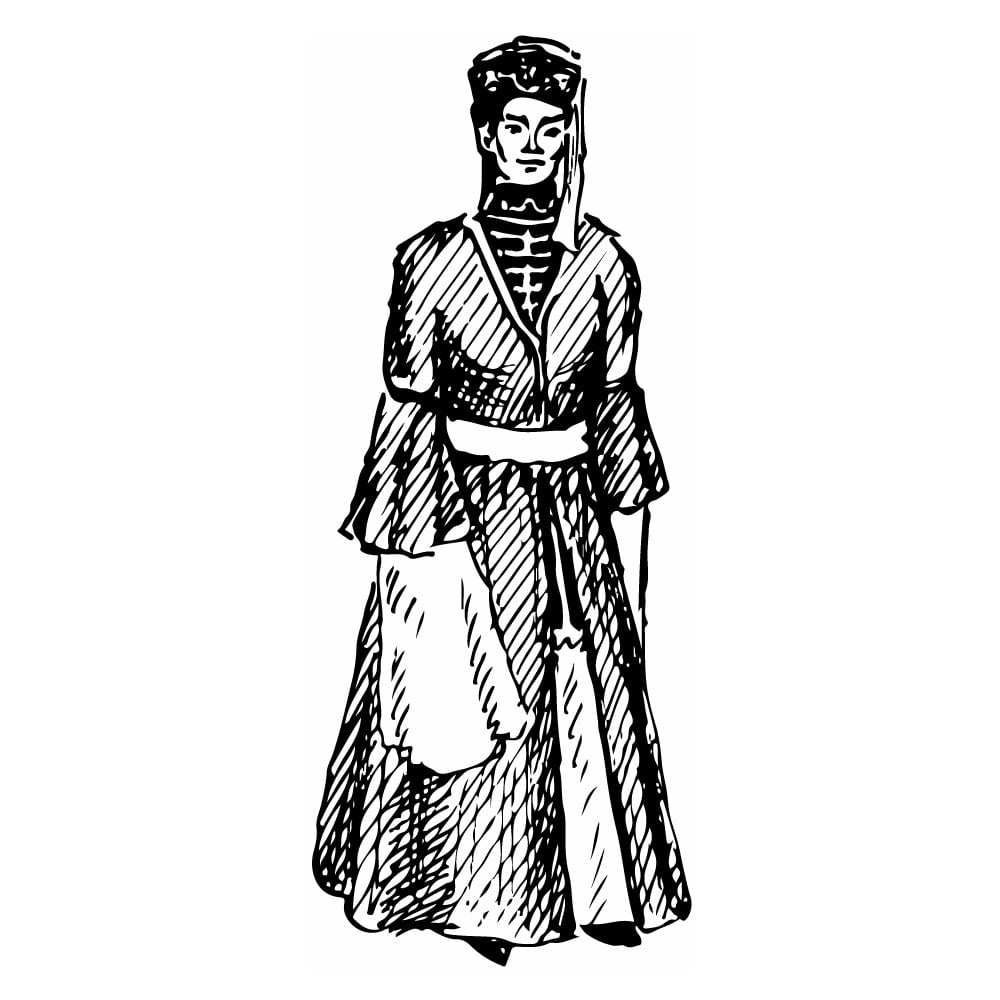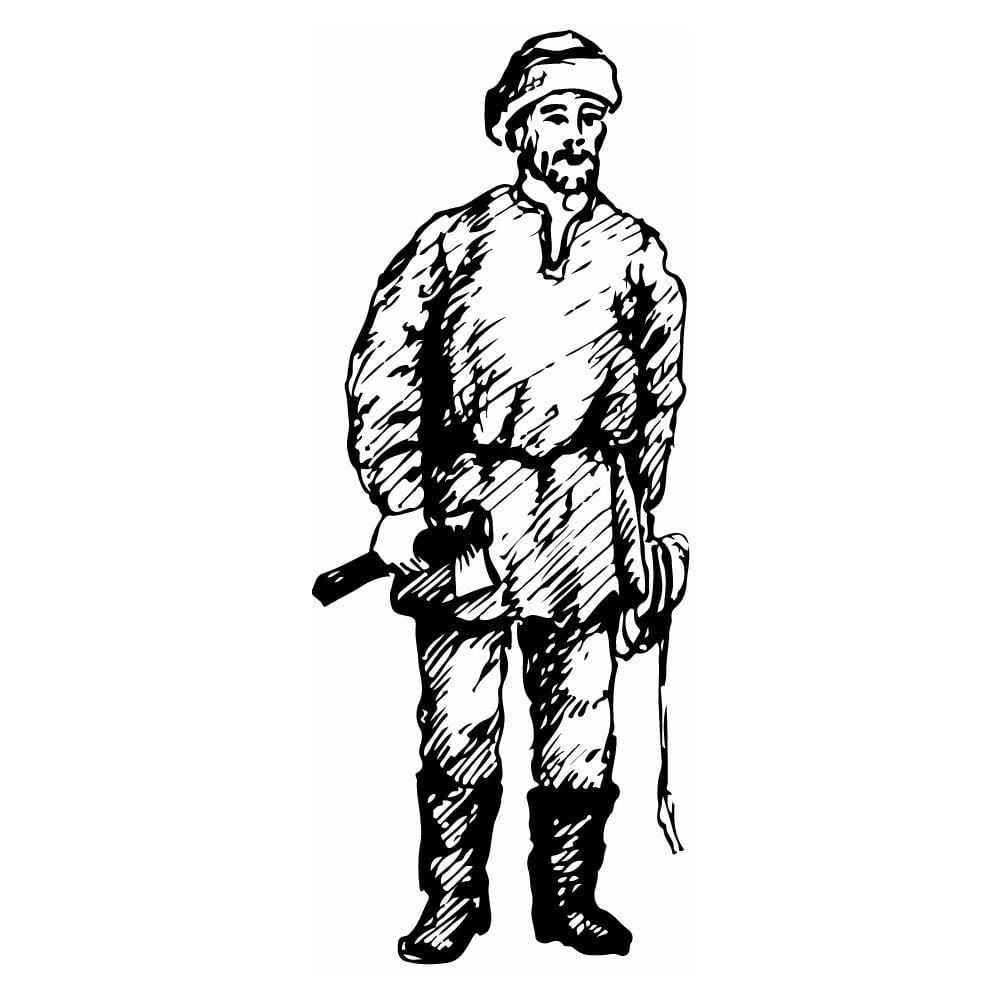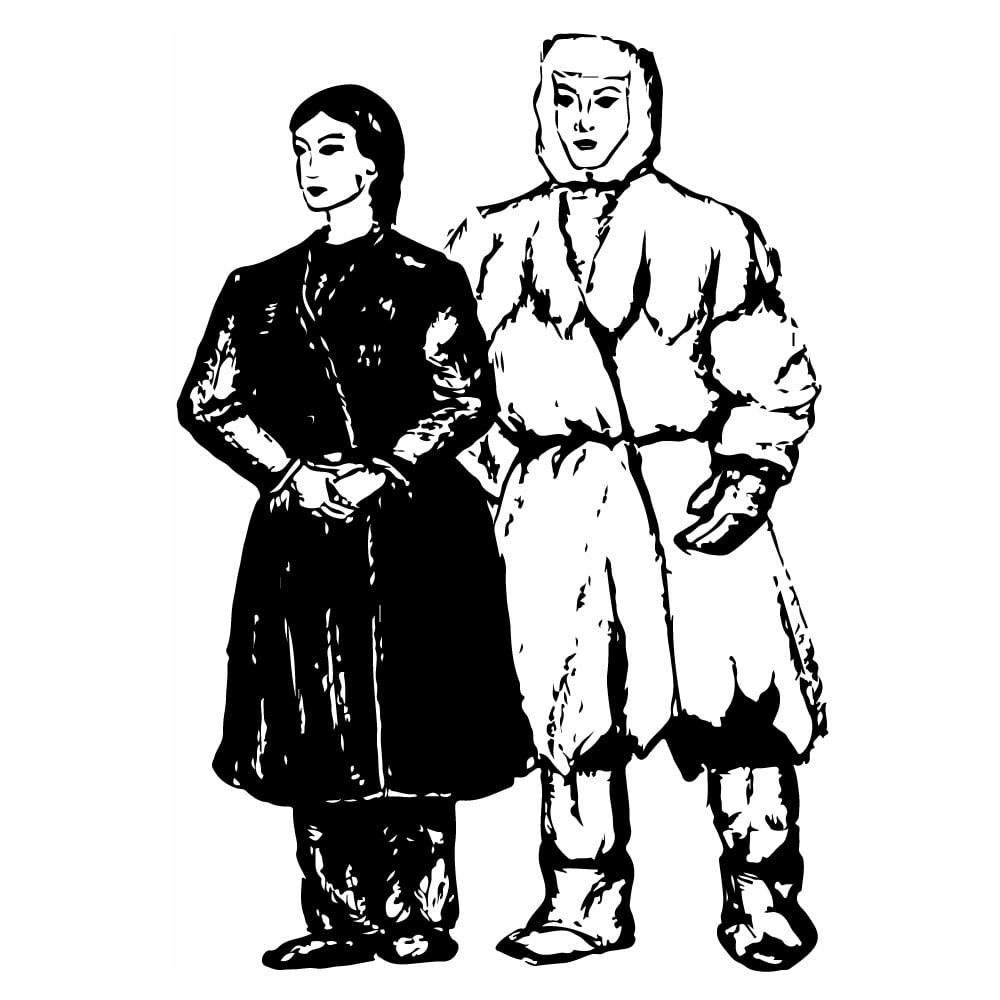Kalmyk
| Population | 166,000 |
| Language group | Mongolian languages |
| Language | Kalmyk |
| Region | Kalmyk Autonomous Republic |
| Capital | Elista |
| Religion | Buddism/Shamanism |
*Population estimates for 1994
The Kalmyk (the Kalmuk or Khalmg as they call themselves) people live mainly in the Kalmyk Autonomous Republic. They also live in the Astrakhan, Volgograd and Rostov regions as well as in the Stavropol Territory of Russia.
Some compact clusters of the Kalmyk may be found beyond the limits of the CIS. They have migrated to many other countries, including the United States of America, Bulgaria, former Yugoslavia republics, and France.
In the first and second millennia the Oyrats (ancestors of the Kalmyk) living in Central Asia belonged to larger political units of the Dun-Khu, Syan-Bi, and Zhuzhan. Later in the thirteenth and fourteenth centuries they constituted a part of the military feudal empire of Genghis Khan and were his followers. Since the end of the fourteenth century, the Oyrats became a separate political unit under the name of the “Derven Ord,” which stands for “four akin tribes.” An example of this tribal configuration is found in the tribes of the Derbyats, Khoshuts, Torguts and Choros. The state they founded presented a unity of different feudal states characterized by sophisticated ethnic composition. This group was of Mongolian descent and lived on the territory of Dzungris. At the beginning of the seventeenth century the Kalmyk roamed from the steppes of Kazakhstan and Siberia down to the Lower Volga River. Part of the Kalmyk tribes who roamed from place to place on the territories between the Volga and Ural rivers later came back to Dzhungaria.
The nomadic Kalmyk who remained on the West Caspian territories founded their khanate on the eastern outskirts of Russia. It became the only hearth of Lamaism (a branch of Buddhism) in Europe.
Lamaism was also adopted by the Oyrats and played an important role in the life of the Kalmyks. One could not imagine a single event in the Kalmyk family without some contact with the gelungs, the representatives of clergy. Gelungs gave names to the newborns, and they even approved the decision of young couples to marry. This was decided by checking the years when the fiancee and bride were born according to the national calendar. The gelung was sent for when somebody fell ill, and he was also a part of any funerals.
There were many Lamaist monastaries (Khuruls) of the Kalmyk origin. In 1886, one could find 62 such monasteries in the Kalmyk steppes. They were considered an integral part of a settlement, which also included Buddhist temples, gelung houses, houses of their disciples and assistants and household buildings. Monasteries possessed different items of the Buddhism worship, such as Buddha statues and the statues of other Buddhist deities, icons, and religious books. Khuruls were the places where future priests studied medicine and Buddhist philosophy. According to tradition, a Kalmyk has to choose one of his seven-year-old sons to ordain as a monk.
In spite of the Lamaist traditions, there were many attempts to convert the Kalmyk to Christianity (Orthodox belief). Upon baptism, the Kalmyk were given Russian names and surnames. The baptized Kalmyk had some privileges. They were given a sum of money to start a small farm. The desperate state of the economy lead many of the Kalmyk to convert to Christianity. Unfortunately, the conversion into the new religion changed nothing in the way of the every-day life of the people, nor did it change their traditional philosophy.
When the Kalmyk moved to the southern limits of Siberia, they developed relations with Moscow. As a result, an agreement was reached that the Kalmyk would became naturalized in the Russian state.
By the end of the seventeenth century, the Oyrats had moved westward up to the Don River. In 1608-1609 they were annexed under Russia on formal and allegedly goodwill terms, though the whole process did not happen overnight. It continued up to the 1650-1660’s. By that time the Kalmyk had not only settled in the Volga steppes, but had also settled on both banks of the Don River.
Situated on the Lower Volga territories and steppes, near the foothills of the Caucasus, the Kalmyk lived in constant contact with the local population. They developed ties with many different Turkic-speaking clusters of peoples, such as the Tatars, Nogai, Turkmen, and others. Thus the Kalmyk nationality was formed through the merging of the local population.
In the past, the Kalmyk were solely nomadic cattle farmers. A limited few used an out-of-date written language. The rest of the people were illiterate. However, the national tradition survived in the works of verbal folklore, such as heroic epics, legends, songs, proverbs and sayings. “Dzhangar” (the national epic and an outstanding monument of ancient, unique Kalmyk culture) was created more than 5,000 years ago. The actors who staged this epic on holidays (dzangars) usually recited all 12 songs of the poem by heart.
At the beginning of the twentieth century, nomadic and semi-nomadic cattle farming was the main branch of the Kalmyk agriculture. The Kalmyk raised cattle, sheep, horses and camels. They also cultivated land. In the coastal territories of the Volga River and the Caspian Sea, the traditional occupation was fishing. Additionally, they hunted steppe animals; mainly saiga. The needs of a private household were satisfied by the fashioning of hand-made utensils.
In the first decades of the twentieth century, the majority of the Kalmyk wore traditional clothes sewn of factory-made fabrics. For warm winter clothes they used home-processed lambskin.
The men’s traditional clothing consisted of a white cotton shirt with long embroidered sleeves, and blue striped cotton trousers.
In summer the trousers were tucked in high boots, and in winter time they were tucked in valenki, a kind of felt boots.
Both men and women smokers had tobacco-pouches and pipes stored in their pockets. All adult men had a knife attached to the left side of their girdle. The knife was protected by a scabbard.
Women’s clothes were more versatile. They were characterized by a white cotton shirt of a loose cut with long embroidered sleeves made from a similar blue fabric. They also wore wide dresses with long sleeves. The sleeves tapered toward the wrist.
Decorations consisted of copper, bronze, silver and gold rings and pendant-earrings worn in both ears by women and in the left ear by men.
Today the Kalmyk wear modern styled clothes. Only some elderly people still prefer the traditional style of girded beshmets (quilted jackets), hats with rectangular crowns, and long dresses with girdles.
The Kalmyk, like other peoples, have preserved their national holidays. They celebrate Tsagir-Sar, a religious holiday that was celebrated in the first full moon time after the New Year. On holidays people usually enjoyed listening to Dzangars, singers, and poets, as well as watching horse races. Since ancient times the Kalmyk were known as skillful riders.
The Kalmyk myths and legends depicted naive folk ideas about the world, people, and animals. They were passed down from the ancient times. As a result, the myths and legends have accumulated a vast variety of knowledge which was learned while tending the animals and running the nomadic cattle farms. This base of experience has passed from generation to generation.
The Kalmyk imitative arts were tightly connected with the household and everyday life. Many household items were thoroughly decorated. For example, the door of the kibitka (a house) was painted in fine and colorful patterns. Metal items were chased and wood was carved.
This is Ad 1





























